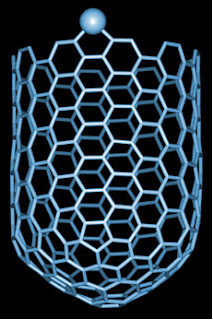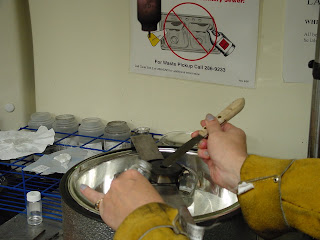NASA Technology Forms the Basis for a New Nanotechnology Company
GREENBELT, Md. - A NASA-developed innovative process is making waves in the nanotechnology field and spurring the development of new companies in the process. A new company based in Austin, Texas, Nanotailor, has licensed NASA Goddard Space Flight Center's unique single-walled carbon nanotube (SWCNT) fabrication process with plans to make high-quality, low-cost SWCNTs available commercially.
One of the basic nanotechnology structures, a carbon nanotube is a graphite sheet one atomic layer thick of carbon that is wrapped on itself to create an extraordinarily thin, strong tube. Although carbon nanotubes were discovered more than 15 years ago, their use has been limited due to the complex, dangerous, and expensive methods for their production.
NASA Goddard, located in Greenbelt, Md. is helping nanotechnology companies like Nanotailor do just that through a simpler, safer, and much less costly manufacturing process for SWCNTs. Developed by retired GSFC researcher Dr. Jeannette Benavides, the key to the innovation is the ability to produce bundles of SWCNTs without using a metal catalyst, dramatically reducing pre- and post-production costs while generating higher yields of better quality product. Other start-up companies that have licensed the process include Idaho Space Materials in Boise and E-City NanoTechnologies in the metro Baltimore area.
 | Thousands of times smaller than the average human hair, carbon nanotubes are extremely long and thin yet strong, making them a key nanotechnology structure. Credit: NASA Ames Research Center. |
This technology transfer success story was made possible by the efforts of NASA’s Innovative Partnerships Program (IPP), which has a two-part focus: (1) forming partnerships between NASA and industry, academia, or other government agencies to support the space program and (2) transferring NASA technology to new applications.
"NASA is committed to working with small businesses so they may be successful. It’s good for technology, for NASA, and for the U.S. economy," said Nona Minnifield Cheeks, Chief of the IPP Office at NASA Goddard.
Release No. 07-45, Contact: Rob Gutro Robert.J.Gutro@nasa.gov 301-286-4044 NASA/Goddard Space Flight Center
Related links:
Technorati Tags: Nano or Nanotechnology and Nanotech and Nanotailor or NASA/Goddard Space Flight Center and single-walled carbon nanotube or White House Press Briefing by Dana Perino 09/19/07 VIDEO PODCAST and Sputnik: 50th Anniversary and Sustainable nanoelectronics, U.S.-Singapore
















No comments:
Post a Comment